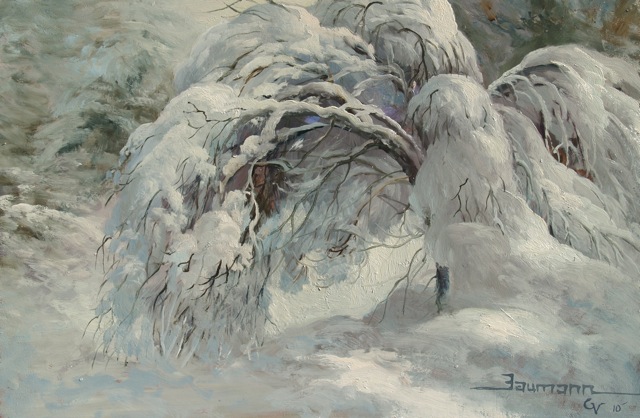The Secret of Painting from Life
If you want to see the world as spectacular as it is, walk in the forest with an artist. The painter’s eye is more sensitive and receives a vast amount more information than a normal person who is seeing the same view. When students first come to my classes, within weeks they report that they have never before seen the world “in color” as they are able to do now and that painting has opened their eyes to the beauty that surrounds them.
The first assignment in my classes is to paint a white egg on a white plate. That Plate sits on a white table cloth. This exercise requires that they really look at their subject before beginning to paint. Most students look at the setup and only see white. Then, with coaching, they look deeper and see that white has little to do with painting eggs at all. At this point, their consciousness has undergone a small expansion and the artist has increased awareness about the painting process. Once the shadows are discovered the student will then focus his awareness on the effects that light.
After that, it is the composition that commands the focus. Gradually or suddenly, the realization that the artist is the one directing the viewer’s perception and that perception can be directed to only one thing at a time. We can not see light, shadow and color at the same time. And we cannot see composition, temperature, and air with just a single glance. We cannot see the windshield and the road at the same time. Creating art is like juggler trying to keep 15 balls in the air. It’s no wonder that artists begin painting from photos just to make the process easier. But when an artist paints from photos, something is lost, and the connection between the artist and subject is disconnected, filtered and dumbed down.
When setting up a still life in your studio, the setup must be created just as it you want it to appear in your painting. If you want your painting to have a dark wall with Japanese print wallpaper in the background, you must carefully set up the still life subject using the same objects, values and colors. If you are going to add something red, it must be placed into the composition you are working from before you begin your painting so that everything appears on the “stage” just as you want it to appear in your painting.
Also, when painting a still life, lighting the stage is as complicated and as important as setting up the composition. I am amazed that many artists who paint from life often don’t have a proper light to work with. Having a light that can be adjusted to be brighter or dimmer, that is easy to move around the studio, and that has a stand that allows the light to be moved up and down is as essential as setting the stage. It is also helpful to have a light that has a barn door attachment that can dim and focus the light stream, or a light that can be dimmed or made stronger with a dimmer switch. Without the ability to adjust the lighting, you can not produce a masterpiece.
All of these elements and many more are important to your success as a still life painter long before you even lay your first brush stroke down. Imagine what it would be like to be that familiar with your subject before you start painting! Then, you can enjoy experimenting and noticing what happens as you really see what you are painting; and once you do, you may never work from photos again!
—

